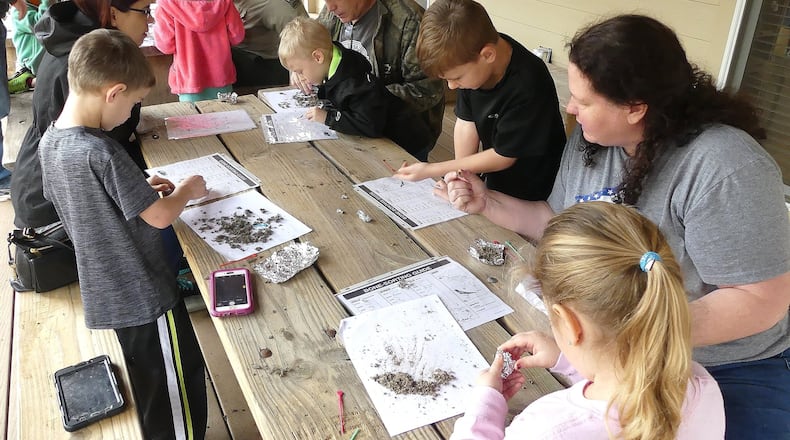Our first reaction was “ick!” We were about to dissect “pellets” of undigested animal remains that owls had spit up after consuming their prey, such as mice and small birds.
Instead of icky, however, last weekend’s “owl pellet dissecting” session at Chattahoochee Bend State Park in Coweta County proved to be a fun and fascinating learning experience.
Seated at tables, 20 kids and adults (including me) pulled apart the dark, furry pellets — each about the size of a large adult thumb — that park naturalist Reba Brumbeloe had given us. (The pellets had been sanitized.) Then, using toothpicks, we began teasing out tiny bones, feathers and other remains of mice, voles, shrews, birds and other prey that the owls had swallowed whole.
We easily found tiny rib bones, pelvises, leg bones (humerus and femur), scapulas and even some intact skulls of the owls’ prey. To identify the animals the remains came from, we had charts with pictures of their tiny bones.
“I’ve got a femur from a vole,” shouted 8-year-old Sky Bailey, who was with his grandfather, Andy Mobley of Newnan. Mobley said he had never heard of a vole (a small, mouse-like mammal) until then.
As Brumbeloe noted, owl pellet dissection is a good hands-on way to teach kids — and adults — about the food chain, animal anatomy and principles of ecology.
Like most other birds, owls don’t have teeth to chew their food. Instead, they swallow their prey whole. In owls, however, food goes directly from their mouths into their gizzards, where digestion begins.
There the food is separated into digestible and indigestible parts, such as bones, teeth, fur and feathers. The undigested parts are compacted together into an oval-shaped pellet, which the owl regurgitates several hours after eating. The great horned owl can produce pellets 3-4 inches long.
Because an owl swallows its prey whole, most of its prey’s bones remain intact and can be dissected from the pellets.
IN THE SKY: From David Dundee, Tellus Science Museum astronomer: The moon will be first-quarter on Thursday. Venus rises in the east about an hour before sunrise. Mars is low in the southwest at dusk and will appear near the moon on Monday night. Jupiter and Saturn are low in the east just before sunrise.
About the Author
Keep Reading
The Latest
Featured


